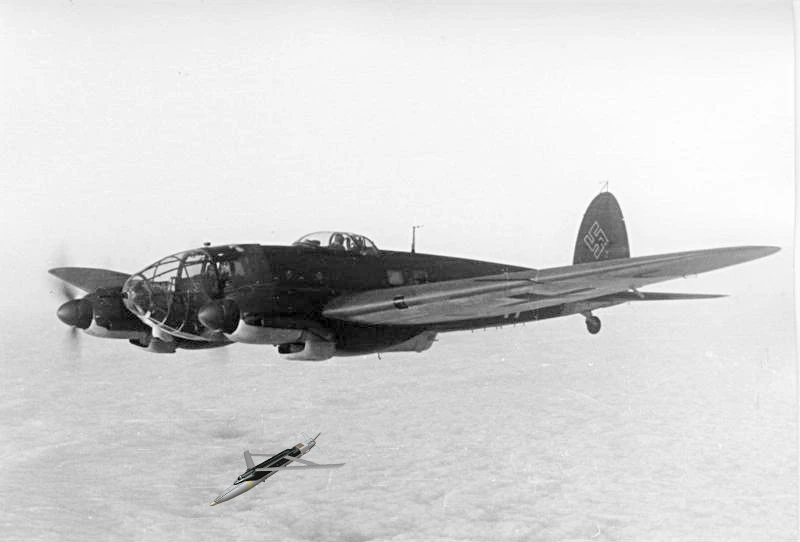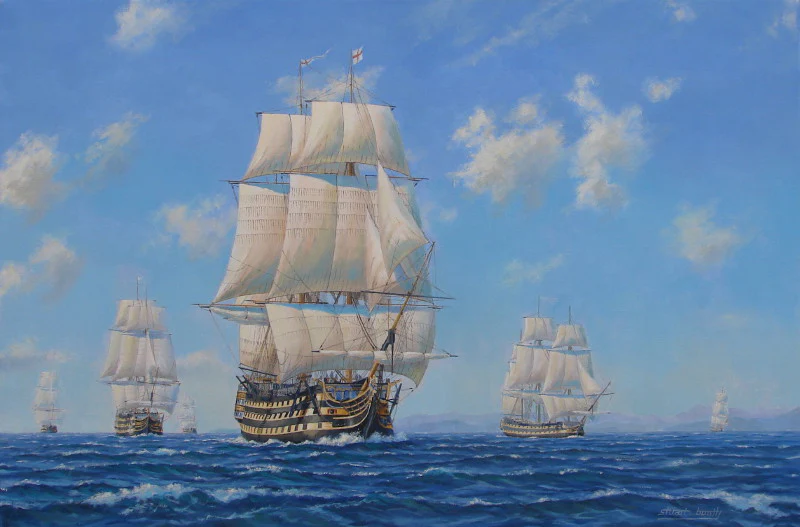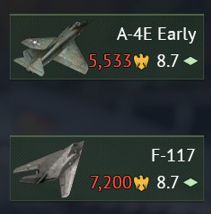He-111 with JDAM next…

He-111 with JDAM next…

what about Predreadnoughts IJN ikoma doesnt count shes armored cruiser/battle cruiser


HMS victorys 16 inch guns firing
lol
are the famous wingtip Drop tanks for the F-104s planned?

Nah, we need pre-Ironclad.
The real HMS Victory
or start with Ironclads for Coastal battles
You all are making me wonder what modern sailing warships would look like.
… and what could prompt them into existing…
a lack of other fuels and/or more Wind on the sea could make that happen
there are currently concepts trying to exploit different physical phenomenons like the Magnus effect being tested
Guys does anyone know what block of the P-51D was operated by the Indonesian air force? I’m tryna build a subtree thingy but I can’t find anything about it
iirc that’s not a Block number but rather a Manufacturer number
Autonomous barges with VLS systems with deployable rotors to harness the Magnus effect and anti-drone defenses sounds like a great way to potentially save costs on coastal defense
Yeah but you know how there’s the D-20, D-25, D-30 etc… I’d like to know which version was used as I barely found anything on internet about Indonesian ones
For the BR mostly since P-51Ds go from 4.0 to 5.0 based on variants
For example I found that one of the P-51Ds of Indonesia had serial F-338… But serial infos I found on internet look very different from that format so what does it mean?
I love how goofy disguising aircraft as other things can turn out. Nothing will ever beat that time that that india tried to disguise some helicopters as elephants though. (What i would do to have this in game, if only it was armed).

Who are they trying to fool lol
Technically it is possible Russia has the su33 at 13.0 and a su22m3 (I don’t not recommend getting the su22 squad vehicle) at 11.0 so 3 nations already have two squad vehicles Germany,Russia,Great Britain right now USA just has one(only counting airplanes only)
Not to make a text wall (sorry mods!), but for your consideration:
2038–2040
• Russian collapse fragments the crude/URALS export chain and breaks Rosatom-linked fuel services. Uranium conversion and enrichment markets tighten; HALEU pilot lines stall.
• U.S. authoritarian pivot triggers secondary sanctions sprawl. Reinsurers price war risk across the Gulf/Indian Ocean at unpayable levels for non-state shipping.
• China courts the EU; Brussels pushes “strategic autonomy,” raising compliance hurdles for U.S.-aligned energy trades and naval port access.
2040–2042
• U.S.–Iran gray-zone war hits Kharg Island and Abadan; Hormuz becomes intermittently mined. UAE hedges; bunkering thins.
• U.S. pressure inside Iraq destabilizes Basra loadings; pipeline sabotage constrains southern Iraqi exports.
• India–Pakistan limited war spreads to the Arabian Sea and Thar air corridors; Karachi refining and Gwadar export reliability collapse.
• DPRK breaks with Moscow; missile tests force Japanese and Korean insurers to pull back in the Sea of Japan and Yellow Sea, fragmenting Northeast Asia product flows.
• War-risk reinsurers exit the Red Sea after Houthi-long-range strikes; Bab el-Mandeb becomes episodically impassable.
• Result: crude exists, but seaborne movement through Hormuz/Bab el-Mandeb/Malacca oscillates. Naval JP-5/MGO availability becomes location- and flag-dependent.
2042–2044
• Coordinated refinery cyber campaign (wiper + OT pivot) hits Jamnagar, Jubail/Yanbu, PADD 3 control systems, and several ASEAN product hubs. Outcome is a refining bottleneck for middle distillates, not just crude scarcity.
• Canada flirts with EU-associated status; U.S. retaliates with tariff and port-state controls, chilling cross-border energy and parts trade. U.S.–Canada naval cooperation degrades; Arctic LNG and fuel depots face political risk.
• HALEU supply crunch hardens: Russian services off-market; Western enrichment conversion backlogs extend to naval programs. Surface-ship SMR pilots are paused; cores reserved for carriers and SSNs/SSBNs only.
• EU opens limited naval nuclear door but caps deployments to home waters; budget and vendor bottlenecks delay any scale.
2044–2046
• A single high-profile SMR incident ashore (grid-tied) drives a political moratorium on “new naval reactors outside strategic classes” in multiple democracies.
• Synthetic-fuel expansion stalls: electrolyzer metals face export controls; power prices spike under grid stress and gas scarcity; CO₂ pipeline siting lawsuits idle e-fuel plants. Aviation captures the little synfuel available.
• War-risk insurance withdrawals become structural; only state fleets and shadow carriers sail contested lanes. Civil bunkering networks hollow out in the Gulf, Red Sea, and eastern Indian Ocean.
• Logistics math breaks for diesel navies. Procurement pivots to wind-assist and battery-heavy hybrids for auxiliaries and patrol forces.
2046–2049
• Fleets bifurcate: a small nuclear blue-water core vs. a broad periphery of wind-dominant hybrids.
• Rigid-wing sails, Flettner rotors, and kite systems are standardized across oilers, MCM vessels, OPVs, and corvettes.
• Pure-sail hulls appear for sanctions evasion, privateering, and littoral sovereignty patrols where fuel is unobtainable or politically denied.
• Missile magazines shrink; lighter multi-role weapons and containerized VLS dominate. Passive sensors, UAV swarms, and optical fire control become defaults to live within power budgets.
• Ports retool for low-power maneuver: electric tug fleets, sail-friendly berths, and prepositioned depots replace underway replenishment in contested seas.
Regional naval outcomes:
Gulf/Arabian Sea
• Wind-dominant escorts and MCM craft proliferate. Nuclear or synfuel-capable groups guard only short, decisive operations. Hormuz intermittency forces sail-assisted convoy doctrine; mines and cheap ASCMs punish anything that must burn fuel to sprint.
Red Sea/Western Indian Ocean
• Periodic closures make sail logistics unavoidable for regional players. Pirate–privateer ecosystems re-emerge with modern drones and commercial SATCOM. State navies field wind-hybrid OPVs with 57–76 mm guns, light ASCMs, and UAV bays.
Western Pacific
• Japan and Australia keep limited nuclear cores with U.S. help; everyone else leans into sail-assist for patrol and EEZ enforcement. Malacca risk pushes China to overland pipelines and rail; PLAN concentrates fuel on a few high-end groups while building wind-hybrid auxiliaries for presence missions.
North Atlantic/Arctic
• U.S.–Canada rupture fractures fuel basing; Greenland/Iceland ports ration military bunkers. Arctic patrols convert to rotor-sail hybrids; nuclear icebreakers gain outsized leverage. EU navies field sail-assist logistics to maintain tempo inside the GIUK gap.
Doctrine and armament deltas:
• Sensors: intermittent AESA, heavy ESM/IR bias, mast-top optronics, burst-only emissions for missile shots.
• Weapons: containerized light ASCMs, NLOS rockets, 57–76 mm guided shells, 324 mm torpedoes, low-draw decoys. Limited laser CIWS where battery banks allow; otherwise gun CIWS.
• Air: electric VTOL and fixed-wing UAVs for ISR/targeting; crewed aviation hoards synfuel for critical sorties only.
• Survivability: low RCS/IR shaping, rig protection or retractable masts, emergency electric drives for egress, expansive decoy suites.
• Logistics: prepositioned stocks, sail convoys with a few nuclear guardians, regional depot warfare as a campaign center of gravity.
i see two right here

“TLDR, F-300 to F-310 are P-51K-15-NT, F-311 to F-323 are P-51D-20-NT, F-324 to F-340 are P-51D-25-NT”
Thanks, that confirms what I found just minutes ago